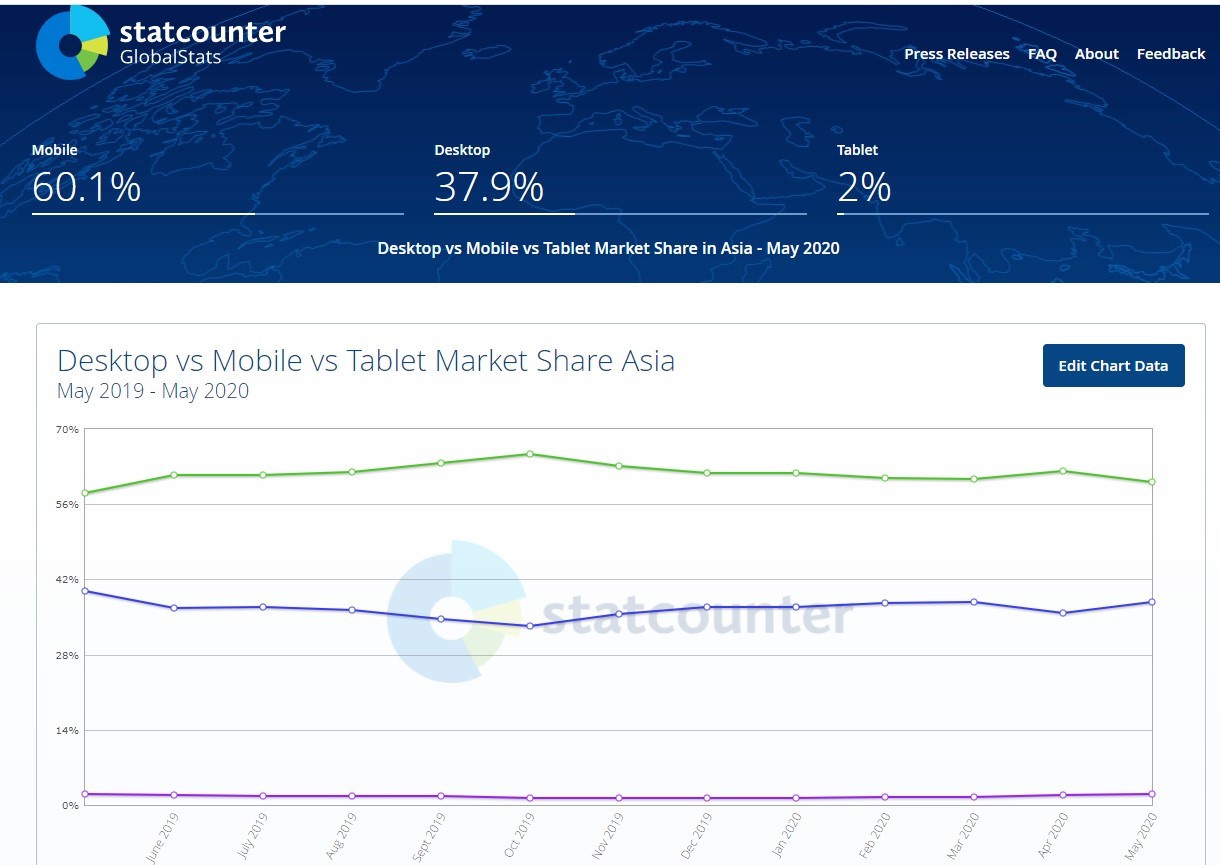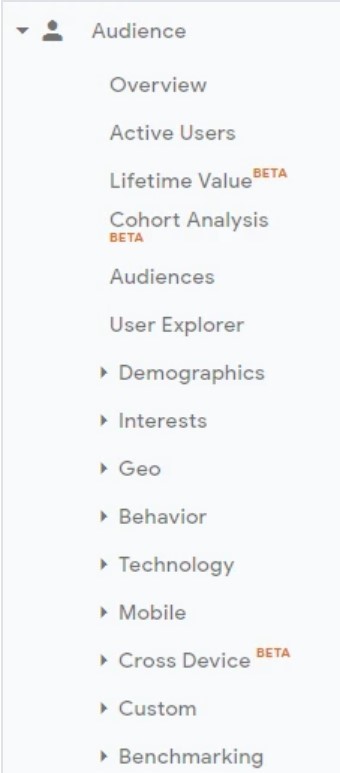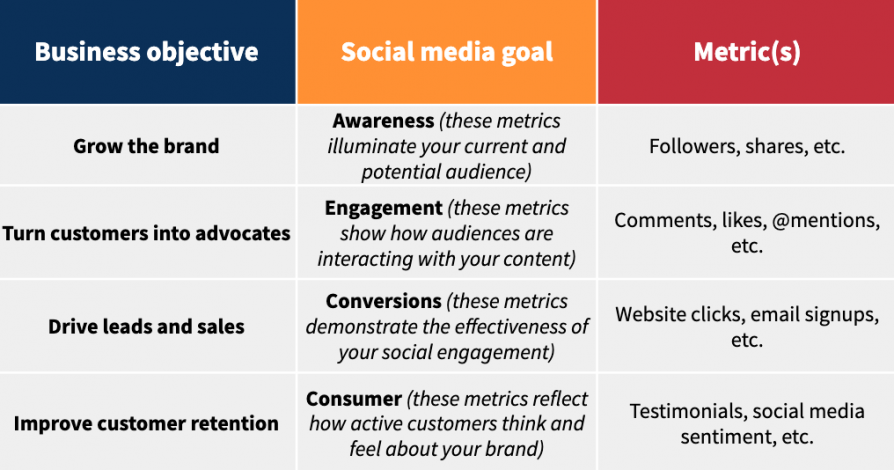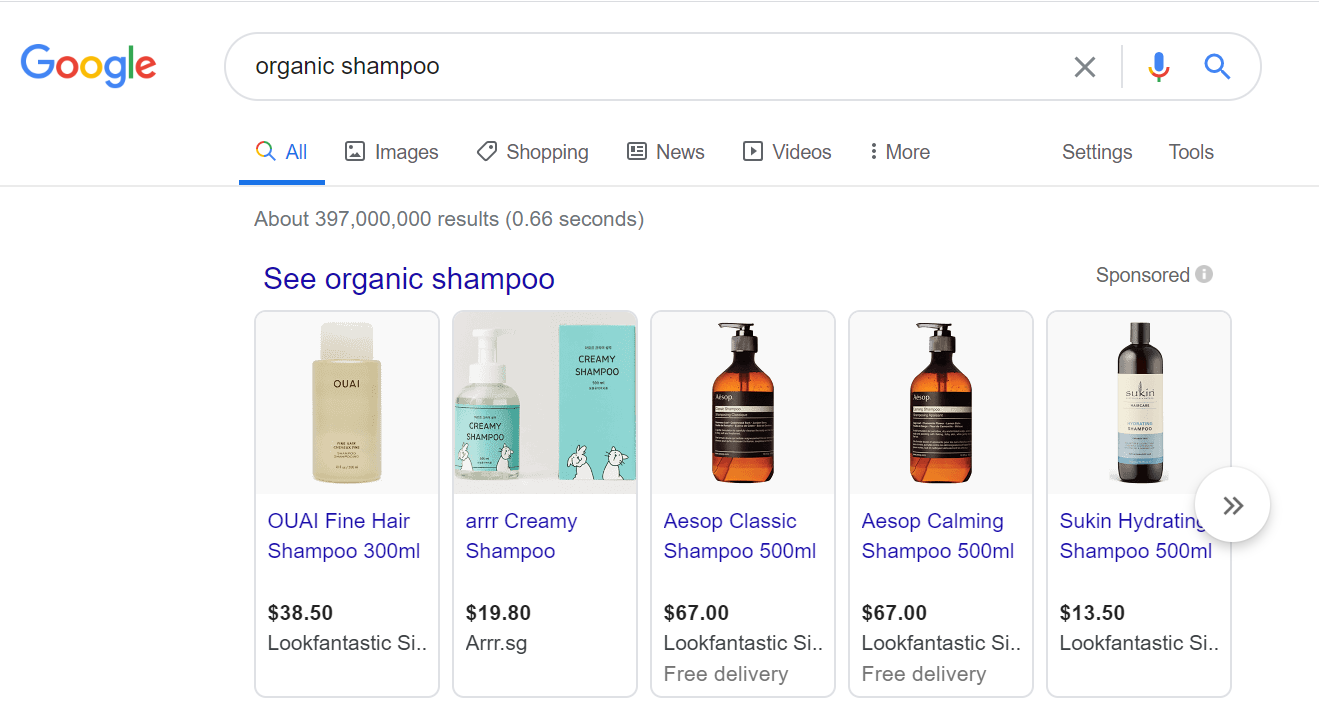Research from GlobalWebIndex indicates that South East Asian countries have some of the highest levels of ecommerce adoption in the world, with Indonesia, Thailand, Malaysia ahead of the global average of 75%, and Singapore at 73%. Ensuring therefore, that we have a good marketing strategy in place, to take advantage of the regions’ customers’ propensity to shop online, is crucial.
There are many different activities one can embark on, depending on your objectives, the maturity of your market or what your customers are used to. The scope of this article focuses on what we consider “hygiene” activities within the digital space, to help you drive traffic to your site, which, when done well, should set you on a sustainable path to attracting the traffic that you can convert into actual sales.
- Get your basics right - ensure a mobile optimised site
-
Statistics have shown that mobile has become increasingly important in generating leads and contributing to sales for all businesses. Just take a look at the percentage of mobile vs desktop search queries for products and services in Asia for the past year in the screen capture below.
Over 60% of all searches are done on a mobile device.
Source: Statcounter
What this tells you is that nothing must stand in the way of your customers finding you and using your ecommerce site easily. To find out if your ecommerce site meets the mobile user experience mark, here are some useful tools you can use:- Mobile friendly site test tool: https://search.google.com/test/mobile-friendly?
- Google Crawler test tool (To check if the site can be crawled easily by Google spiders): https://search.google.com/search-console/about
- Mobile Speed test tool (To check how quickly your site loads on mobile): https://www.thinkwithgoogle.com/feature/testmysite
If issues arise, take the time to fix them because you don’t want accessibility, speed and viewability issues to derail your marketing efforts. If you’re just starting on your ecommerce journey or looking to brief your agency to build or revamp your ecommerce site, we highly recommend a reading of Steve Krug’s “Don’t make me think, Revisited” - a detailed Web and Mobile Usability guide.
Overdrive link here: https://www.overdrive.com/media/1515283/dont-make-me-think-revisited).
-
- Search Engine Optimisation (SEO)
- Search Engine Optimization is a proven and highly cost effective digital marketing strategy. The basic principle is to make your company and products as visible as possible to the people looking for them. Before any optimization begins, you’ll need to do considerable work to understand what keywords customers are using to search for products like the ones you’re selling. Keyword planning tools such as Moz, SEMRush, Google Keyword Planner can all be used to help in your research.
-
As Google accounts for over 90% of all searching online (Source: https://gs.statcounter.com/search-engine-market-share), here’s a look
at the things you must get right to get good SERPs (Search Engine Results Pages) for your products on Google.
On Page Factors (These refer to best practices on a page level you can work on to ensure your page searches well. Source: Moz Blog).- Ensure your page has relevance to a specific topic or search subject by:
- Including the keywords in title tag
- Including the keywords in URL
- Including the keywords in the H1 text. (For more information on H1 text check out this page.
- Including the keywords in image alt text
- Specifying the keywords several times throughout the text content https://www.w3.org/QA/Tips/Use_h1_for_Title)
- Provide unique content about the subject
- Link back to its category page
- Link back to its subcategory page (If applicable)
- Link back to its homepage (normally accomplished with an image link showing the website logo on the top left of a page).
Off-Page SEO (This refers to strategies that are not deployed on a page level, but for your entire site).
- Content creation and marketing
- Link building and exchange
- Social Bookmarking
- Submissions to directories and search engines
Google search engine algorithms are complex and continuously upgraded using a host of factors such as the ones mentioned earlier including user experience, site speed and domain. SEO should therefore be viewed as a long term strategy with time and effort spent to consistently benchmark and improve upon.
- Ensure your page has relevance to a specific topic or search subject by:
- A few words on optimising your site for Voice Searches. Studies show
that in 2020, more
than half of all smartphone users will engage with voice technology on
their device. According
to Google, searches for “near me” business have increased
dramatically over the
past few years.
- Create / Update your Google My Business listing: Register your business, complete with address, customer service contact and ecommerce site details with a Google My Business listing. This will help you rank for “near me” searches as well as local SEO.
- Optimise for long tail keywords -These are defined as search terms and phrases that are typically longer than the usual search query and tend to be quite specific. Hence, optimizing for voice search means targeting long-tail keywords and incorporating them into your SEO strategy. Something else to consider when targeting long-tail keywords is how, unlike a typed search query, spoken voice searches are usually quite conversational. By targeting long-tail, conversational keywords and phrases and answering questions your prospective customers are likely to have, you stand a much better chance of ranking for these queries and appearing prominently in search results.
- Content marketing - because it drives traffic
- Content marketing works for ecommerce businesses because search engines rank good, authoritative content highly, and this in turn can drive a lot of traffic to your site.
- Content marketing is essentially content that you create to educate your target audience without hard selling. You want to be that smart friend that people come to for advice, not the pushy salesman. And if you can find a way to offer them useful information wherever they are in their journey and provide value up front, you establish credibility in the minds of your readers and develop a relationship of trust so that when the time comes where they are in the market for your product or service, you would hopefully fall into their consideration set.
- So how do you start? First, you need to know what topics / search words your target audience is interested in. To do that, you can rely on keyword search tools like Moz, SEMRush, Google Keyword Planner, First, come up with a list of keywords using your own knowledge about your product and target market, what there buyer motivations and / or concerns may be and use these words to generate more keyword ideas. Next, enter a competitor site url as well, to derive the top keywords that are driving traffic to their site and add these to your consideration list.
- The next thing is to start looking at the search volumes for the different keywords. Whilst the highest volume keywords tend to be where you can normally start, don’t overlook analyzing a little further afield to see if there are opportunities in less popular keywords that you can use. Search them in Google yourself and look at the search results that come out. What is the content on that topic that is currently out there, and try to do better! Remember, content marketing only works if you provide content that people want to read.
- Remember, content can come in many forms like blog posts, ebooks, videos, infographics, webinars, podcasts, polls, quizzes, downloadable templates etc so keep researching and experimenting.
- When you’re done, put the content out there. Start with your email subscriber base, and then also distribute the content on your social media channels. Basically, wherever your customers congregate, you want to be.
- Email Marketing
- Build your list: For many ecommerce companies, email marketing is the 101 of digital marketing. The general principle is that customers interested in your products give you their email addresses
and therefore explicit permission to market to them. In terms of ROI, it probably yields one of the best results!
- So start by building your email list for your ecommerce business and be religious about doing so. You can provide an email sign-up form on your website, blog or at the check-out and offer a small incentive, such as free content or a discount code to encourage customers to do so. Other methods include getting your customers to refer their friends to your site in exchange for a discount off their own purchase if their friends actually make a purchase. These are all tactics used by the largest ecommerce companies to good effect.
- Making your emails personalised.
-
To avoid your emails not being opened or worse, thrown into a SPAM box, it is important to design email campaigns that are appealing, informative and connect to your audience as individuals. By using your website’s analytics tool, an example being Google Analytics’, you can access “Audience” results and start to drill down a long list of powerful demographic, geolocation, age, and interests insights about the visitors to your website to start crafting some meaningful, relevant and personalised emails.

So say you’re targeting a segment of young women, you can study what pages they’ve visited on your site, and then suggest to your female subscribers the products other women have bought or viewed, or feature their reviews of your products/s, or promote the blog posts most visited by them.
Another useful report from Google Analytics is the in-market segment one. That shows you the products your customers are actually looking to buy on your site. For example, if you sell facial products online, the in-market segment information will let you see what people in this segment are looking at most, and you could send customer testimonials or videos demonstrating the efficacies of the cleanser or even a free sample of the product directly to them. This personalization will help increase open and click-through rates, and sales.
-
- Ensuring your landing pages support the email content so as not to lose the interest of your reader. So as an example, if your email markets the educational benefits of your product, then make sure the landing page needs to lead with benefits and explain those benefits in detail, versus being a generic product landing page that focuses on product features.
- Email marketing automation: A good way to manage your email marketing is to automate it, which simply put, is the application of a set of predefined rules using an email marketing automation software,
to target the right message to the right customer at the right time, thereby alleviating the time consuming tasks of preparing a special email contacts list, manual scheduling and sending out generic one size
fits all messaging.
-
Email marketing automation platforms such as Hubspot, Marketo or Salesforce allows the User to set up automated, personalised “campaign” “workflows” that can get triggered when a contact gets added to a list, submits a form on your website, clicks a link in an email, views a page on your blog or clicks on one of your AdWords ads to help you nurture your leads, upsell or cross sell products more effectively.
-
Many of these email marketing automation platforms also let you do A/B testing, as well as provide detailed tracking data that you can analyze to refine design, copy, messaging and offers.
-
- Build your list: For many ecommerce companies, email marketing is the 101 of digital marketing. The general principle is that customers interested in your products give you their email addresses
and therefore explicit permission to market to them. In terms of ROI, it probably yields one of the best results!
- Social Media Marketing & Selling
-
According to eMarketer, the role of social networks as a research tool has risen steadily in recent years, with 36 percent of consumers citing social platforms as essential to their purchasing decisions. It is therefore an important channel to add to your digital marketing mix. Before you jump headlong into posting on Facebook, Instagram, Wechat, Twitter, LinkedIn, Pinterest or any other platform, it pays to think about what your objectives are, so you can design the right posts to achieve the right outcomes.
- Establish your goals and desired outcomes for your target
audience
Depending on whether you’re using social media to help create brand awareness, increase demand for your products, or as a channel to acquire followers or drive sales, you’ll be setting different matrices to measure effectiveness as well as designing different types of posts to talk to different groups of customers.
We find this matrix from Hootsuite a good reference:

(Source: Hootsuite Blog)
- Create different buyer personas - Communications that are not directed at any buyer persona tends to look and sound generic. So, piece together a reasonable picture of who you’re talking to, by looking at some of the audience profiles of your customers from your own data and also those of your competitors on their social media pages. Factors like age, gender, location, their marital statuses, their motivations for buying your product and concerns, what kinds of apps or products they like and / or follow, can all help you create some form of a broad persona.
-
Curating and creating content: Defining a calendar of the different content topics and type of content you want to post, as well as an asset library of sorts will serve you well versus scrambling for something to publish every day. More importantly, you’ll establish a consistency and variety to your social media communications which will help in keeping customers engaged.
You’ll find different templates online that you can use to create a social media calendar, and here are a few you can check out. - Creating shoppable posts: Social media posts are no longer about just sharing content or keeping a conversation going with your followers. Where there used to be stories featuring products, these were never fully integrated in the shopping process. These days, creating shoppable content that not only entertains your reader but lets him/her spontaneously add the featured products to a shopping cart directly, or be taken to a product page and continue to shop from there, is a proven social selling tactic.
- Measure, refine, measure, refine: Find a social media analytics software that meets your budget. Metrics are important because they tell you if a campaign or strategy is successful over time. Some of the more common and often important metrics to pay attention to are engagement, impressions and reach, share of voice, referrals and conversions and response rate and time. For ecommerce businesses, you’ll want a good understanding of which social media sites and posts are contributing to your business goals. To track these, you’ll need a publishing strategy that incorporates UTM tracking to help you get really specific with your traffic source as well as a website traffic analytics program like Google Analytics or a built-in one if you’re on an e-commerce platform like Shopify. Setting up goals in Google Analytics will help you understand how your content is converting.
- Establish your goals and desired outcomes for your target
audience
-
- Paid Advertising
- Google Ads - With Google Ads, you target specific keywords, and bid for them to feature in relevant searches. Because you are directly targeting Users who are actively searching for certain products or services, they are much further down the purchase funnel making AdWords a cost effective channel to invest in.
- Facebook & Instagram Ads - Facebook and Instagram Ads operate under the same interface, so we’ll talk about them together. Instead of targeting users by search intent and showing them ads when customers are looking for you, you target users based on different qualities like age, interest, and location to introduce them to your product. Because of its wide reach, it’s a great way to create demand and introduce users to your products.
-
Google Shopping Ads - We want to spend a bit of time talking about Google Shopping Ads.

- These show users products based on what they search. They can appear on top of a Google Search Results Page or on the right column of the page. When these ads are clicked, users are taken directly to the seller’s
ecommerce site. We like these ads because:
- They’re visual and let you showcase nice images of your product in an otherwise text-heavy search shopping experience.
- You’ll show up multiple times in Google SERPs — as a website result, a text-only PPC as well as a Shopping result.
- Google Shopping is proven to have 30% higher conversion rates than text ads (Ok, only US data for now, but still).
- Sellers can get their ads featured directly in front of customers by including highly relevant keywords into product titles and descriptions. The key to optimizing these feeds is In many ways, similar to implementing On-page SEO as per the guidelines we provided in the SEO section above. Google Shopping is powered by two platforms: Google Ads and Google Merchant Center. Google Ads is where your shopping campaigns live and where you set your budget, manage your bids, gain insights, and make optimizations based on performance. Google Merchant Center is where your product feed—the details of products organized in a format Google likes—is stored. Do refer to Google Merchant Center Guidelines & Shopping Ads Policies before embarking on your Google Shopping Ads Campaign. For a detailed step by step set up guide, watch this video: https://www.youtube.com/watch?v=dq2VlBbqTL4.
This is by no means a definitive list. As marketers, it’s good business practice to keep your finger on the pulse to know what trends and new technologies are developing in your industry. From enabling an omni-channel personalised shopping experience that includes all possible shopping moments to incorporating Augmented Reality to help customers envision your products in real spaces / use cases, we encourage you to pick what works for you now whilst keeping an eye out for what’s out there, and keep experimenting.
Stay tuned for our next article where we’ll be looking at Conversion Rate Optimisation (CRO) Strategies to help you drive more sales out of your eCommerce websites.

